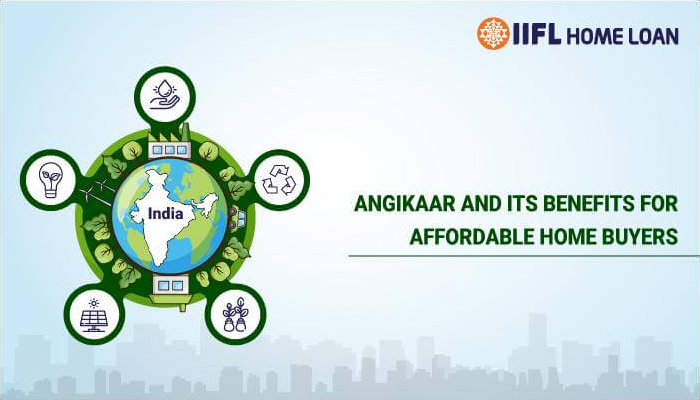Union Budget 2024 Highlights: Key Takeaways and Impact

The Union Budget 2024 has been a focal point of discussion across India, marked by significant reforms and initiatives. As businesses and individuals alike delve into the Union Budget 2024 summary, there's a keen interest in understanding how the budget will shape various sectors including agriculture and rural development, MSMEs, and the broader economic landscape.
Focus on Agricultural and Rural Development
- Allocation of Funds: ₹1.52 lakh crore dedicated to modernizing agriculture, emphasizing climate resilience and productivity.
- Climate-Resilient Crops: Introduction of 109 new high-yielding varieties to ensure sustainability and improve food security.
- Organic Farming Support: Development of 10,000 bio-input resource centers to promote organic farming methods among farmers.
- Irrigation Projects: Enhanced funding for existing and new irrigation schemes to increase agricultural output.
MSME and Industrial Growth
- Credit Guarantee Scheme: Introduction of a new scheme to facilitate easier finance for MSMEs to purchase machinery and equipment.
- TReDS Platform: Reduction in turnover threshold from ₹500 crore to ₹250 crore for mandatory onboarding, improving liquidity management for smaller enterprises.
- Expansion of Reach: SIDBI to open new branches to directly serve major MSME clusters, enhancing access to financial services.
- Increase Credit under Mudra Loans: The borrowing cap for Mudra loans under the 'Tarun' category has been raised to Rs. 20 lakh from the existing Rs. 10 lakh. This increase is available to entrepreneurs who have successfully repaid previous loans within the same category.
Personal Taxation Reforms
One of the most impactful sections of the budget 2024 is the extensive tax reforms. Noteworthy changes include the restructuring of tax slabs under the new tax regime under budget 2024, which aims to provide relief to the middle class.
| New Tax Regime Slabs | Tax Rate |
|---|---|
| ₹0-3 lakh | Nil |
| ₹3-7 lakh | 5% |
| ₹7-10 lakh | 10% |
| ₹10-12 lakh | 15% |
| ₹12-15 lakh | 20% |
| Above ₹15 lakh | 30% |
Simplification of Taxation
The Union Budget 2024 brings a series of transformative changes to the taxation landscape, aimed at simplifying the process for taxpayers and promoting investment across various asset classes. Here are the budget 2024 key points, budget 2024 tax changes, and budget 2024 key takeaways related to the new tax regime, which are essential for investors and financial planners to understand.
- Unified Holding Periods:
- Listed Securities: The holding period for all listed securities is now standardized at 12 months. Securities held for more than this period are considered long-term. This simplification helps investors easily determine their tax liabilities, ensuring a clearer understanding under the new tax regime under budget 2024.
- Other Assets: For assets like real estate and unlisted shares, the long-term holding period has been reduced to 24 months from the previous 36 months. This change facilitates quicker qualification for lower long-term capital gains taxes, promoting investment in these asset classes.
- Taxation Rates Adjusted:
- Increase in Short-Term Capital Gains Tax: The tax rate for short-term capital gains on listed equity shares, equity-oriented funds, and business trusts has increased from 15% to 20%. This adjustment aligns the tax rates closer to ordinary income tax rates, potentially discouraging speculative short-term trading, which is a critical budget 2024 tax change.
- Modification in Long-Term Capital Gains Tax: The tax rate for long-term capital gains on these assets has increased from 10% to 12.5%, but to offset this increase, the exemption limit has also been raised from ₹1 lakh to ₹1.25 lakh annually. This change benefits investors by allowing a higher amount of gains to be exempt from taxation.
- Alignment of Unlisted Bonds and Debentures:
- Unlisted bonds and debentures are now treated similarly to debt mutual funds and market-linked debentures, where gains are considered short-term regardless of the holding period. This treatment means that gains from these assets will be taxed at the investor's applicable income tax slab rate, simplifying the tax calculation process and ensuring consistency across similar investment products.
- Removal of Indexation Benefit:
- The previous benefit of adjusting the purchase price of an asset for inflation before calculating the gain has been removed for all assets. All long-term capital gains are now taxed at a flat rate of 12.5% without any adjustment for inflation, simplifying the tax filing process. This is a one of the budget 2024 key takeaways that may increase the tax burden on gains derived from assets held over long periods.
- Continuation of FMV Provision:
- Despite other changes, the budget retains the provision that allows investors to consider the Fair Market Value (FMV) of an asset as of April 1, 2001, as the cost basis if it results in a lower gain. This continues to be a significant relief for those selling older assets, as it can substantially reduce the taxable capital gain by updating the cost basis to a more recent valuation.
The Union Budget 2024 also indirectly influences the real estate market, particularly concerning home loans and home loan interest rates. By simplifying the tax framework and encouraging investment in real estate through adjusted capital gains tax policies, the budget could lead to increased real estate activity. This potential uptick might influence lenders to adjust home loan interest rates competitively, benefiting homebuyers. Furthermore, the increase in disposable income from tax savings could enhance borrowers' capacity to manage or take on new home loans, stimulating growth in the housing sector.
Urban Development and Housing
- Transit-Oriented Development (TOD): The government plans to implement TOD in 14 large cities with populations exceeding 30 lakh. This initiative aims to maximize access to public transport, reduce car dependency, and promote sustainable urban growth.
- PM Awas Yojana Urban 2.0: An investment of ₹10 lakh crore, including ₹2.2 lakh crore of central assistance over the next five years, is earmarked to address the housing needs of 1 crore urban middle-class and poor families, highlighting a significant push towards reducing urban housing deficits.
- Enhanced Urban Services: In collaboration with state governments and multilateral development banks, the budget plans to improve sewage treatment, water supply, and solid waste management across 100 large cities through viable projects.
- Development of Urban 'Haats': To promote local commerce and cultural vibrancy, the government will develop 100 weekly 'haats' or street food hubs in selected cities over the next five years, fostering community engagement and tourism.
- Stamp Duty Moderation: Encouragement for states to reduce stamp duty rates, with special considerations for properties purchased by women, aims to make home ownership more accessible and stimulate the real estate market.
Human Resource Development and Social Justice
- Rural Development Funding: An allocation of ₹2.66 lakh crore is directed towards rural development and infrastructure, ensuring that growth is inclusive and benefits reach the grassroots level.
- Infrastructure Projects: Significant investments in road connectivity projects such as the Patna-Purnea Expressway and the Buxar-Bhagalpur Expressway, and major power projects, including a 2400 MW power plant at Pirpainti, are set to transform the infrastructural landscape of the region.
- Support for Andhra Pradesh Reorganization Act: With a commitment of ₹15,000 crore for the current fiscal year and more in the following years, the government aims to ensure the act's objectives are met, supporting vital infrastructure developments.
- PM Awas Yojana Expansion: Three crore additional houses under the PM Awas Yojana for rural and urban areas indicate a massive push towards ensuring housing for all.
- Empowering Tribal Communities: The launch of the Pradhan Mantri Janjatiya Unnat Gram Abhiyan aims to uplift socio-economic conditions for tribal communities across 63,000 villages, benefiting 5 crore tribal people.
Wrapping up
From an investor's perspective, understanding the budget 2024 key points and Union Budget 2024 summary is crucial for adapting to India's evolving financial landscape.
By focusing on critical areas such as agriculture and rural development, MSME support, and significant tax reforms, the budget aims to provide a balanced approach to development. Initiatives like the new tax regime under budget 2024 and investments in urban housing and infrastructure demonstrate a commitment to making India more resilient and financially inclusive.
Tags
Disclaimer: The information contained in this post is for general information purposes only. IIFL Home Finance Limited (including its associates and affiliates) ("the Company") assumes no liability or responsibility for any errors or omissions in the contents of this post and under no circumstances shall the Company be liable for any damage, loss, injury or disappointment, etc. suffered by any reader. All information in this post is provided "as is", with no guarantee of completeness, accuracy, timeliness, or of the results, etc. obtained from the use of this information, and without warranty of any kind, express or implied, including, but not limited to warranties of performance, merchantability, and fitness for a particular purpose. Given the changing nature of laws, rules, and regulations, there may be delays, omissions, or inaccuracies in the information contained in this post. The information on this post is provided with the understanding that the Company is not herein engaged in rendering legal, accounting, tax, or other professional advice and services. As such, it should not be used as a substitute for consultation with professional accounting, tax, legal or other competent advisers. This post may contain views and opinions which are those of the authors and do not necessarily reflect the official policy or position of any other agency or organization. This post may also contain links to external websites that are not provided or maintained by or in any way affiliated with the Company and the Company does not guarantee the accuracy, relevance, timeliness, or completeness of any information on these external websites. Any/ all (Home/ Loan Against Property/ Secured Business Loan/ Balance Transfer/ Home Improvement Loan/ NRI Home Loan/ Home Loan for Uniformed Services) loan product specifications and information that may be stated in this post are subject to change from time to time, readers are advised to reach out to the Company for current specifications of the said (Home/ Loan Against Property/ Secured Business Loan/ Balance Transfer/ Home Improvement Loan/ NRI Home Loan/ Home Loan for Uniformed Services) loan.
 Login
Login






















